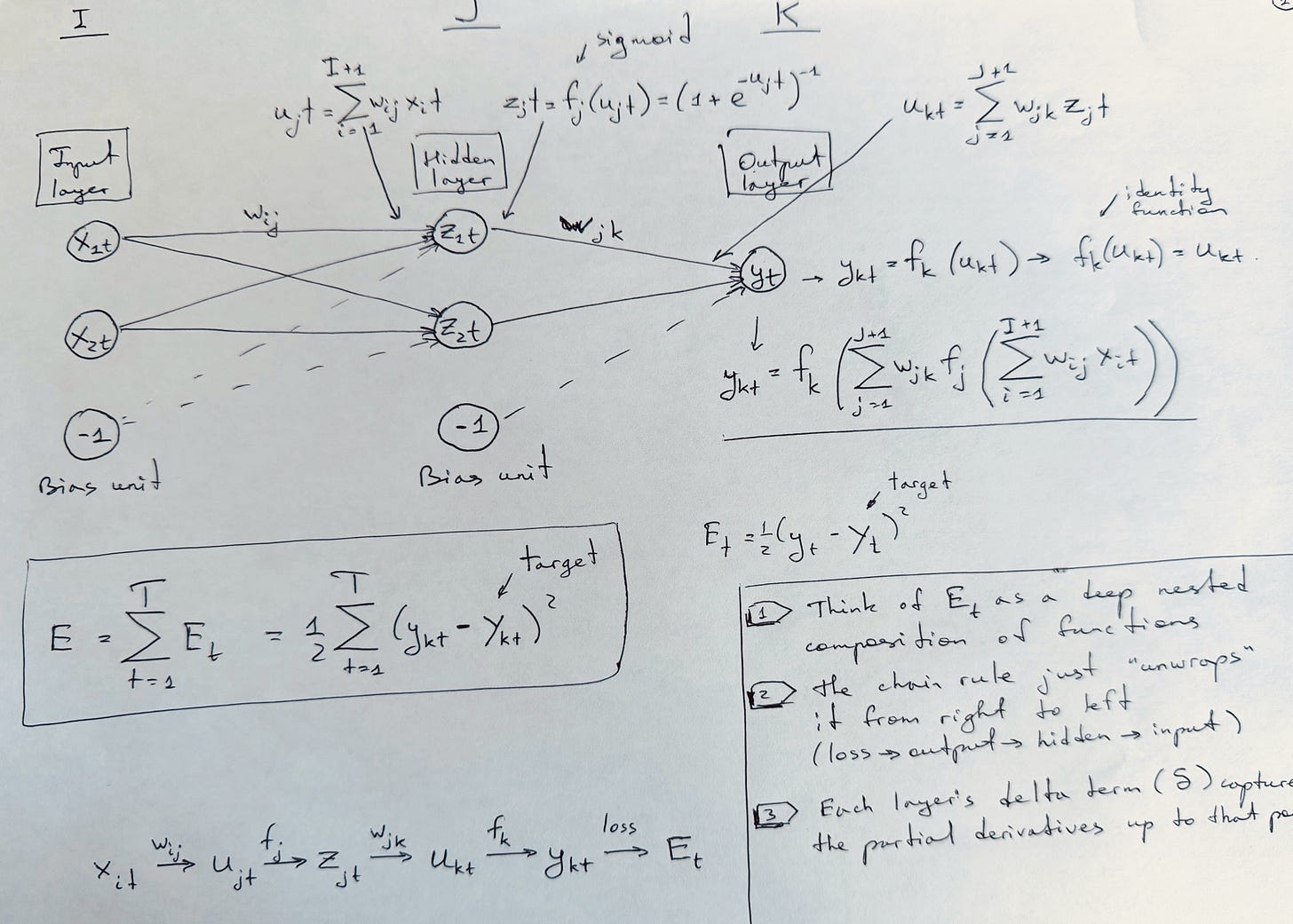Climbing the Math Mountain and Loving the Discomfort
It’s been a quiet couple of months, full of learning, mental stretching, and the kind of intellectual discomfort that comes before real understanding. Here’s what I’ve been busy with.
Hi everyone,
In Is Math Real?, mathematician Eugenia Cheng wrote:
“Accepting a little intellectual discomfort (or sometimes a lot of it) is an important part of making progress in math.”
That captures my past couple of months pretty well. Baby steps, plenty of challenge, and those rare (but oh boy) satisfying moments of clarity.
Math progress
I finished a first pass through two of Seth Braver’s books:
• Full Frontal Calculus: An Infinitesimal Approach
• The Dark Art of Linear Algebra: An Intuitive Geometric Approach
I feel smarter now :)
Both books are terrific. I plan to do another pass, like a neural network making multiple passes through data to refine its understanding and detect patterns. Expect more chapter reviews soon.
I also discovered that Braver has videos on multivariable calculus. I watched a couple on partial derivatives and gradients, two fundamental math concepts for deep learning.
Seth, if you happen to see this (no pressure!), please consider writing a book on multivariable calculus and a second edition of the linear algebra one that covers SVD and PCA. Your material is outstanding.
More learning ahead
Braver’s new trigonometry videos are excellent. Watching helps, but watching is not learning. Real learning happens through reading and doing exercises. I need to remind myself of that, otherwise it’s easy to spend hours on YouTube with zero retention.
Next up: filling some serious gaps in probability and statistics. Probably a lot more discomfort is coming, but as they say, no pain, no gain.
Artificial neural networks and physics
I’ve been slowly working through Artificial Intelligence Engines by James Stone. It’s relatively short but dense with insight.
I revisited the chain rule for functions with several variables, and I’m currently going through the forward pass math in a simple 2-2-1 perceptron with a sigmoid activation in the hidden layer.
I’ve also been adding some conceptual physics into the mix. Math and physics feed each other, and to really understand how the world works, you need a bit (okay, maybe a lot) of both. I’m starting with classical mechanics for now.
A few other things
Work has a way of finding you. I’ve taken on a bit of consulting, helping a couple of teams run smoother and ship better software, faster. So far, so good.
A quote that’s been on my mind lately:
“The highest activity a human being can attain is learning for understanding, because to understand is to be free.” — Spinoza
If you’re celebrating, happy Halloween, and happy weekend wherever you are. Stay curious and keep climbing your own mountain.
— Ruslan


